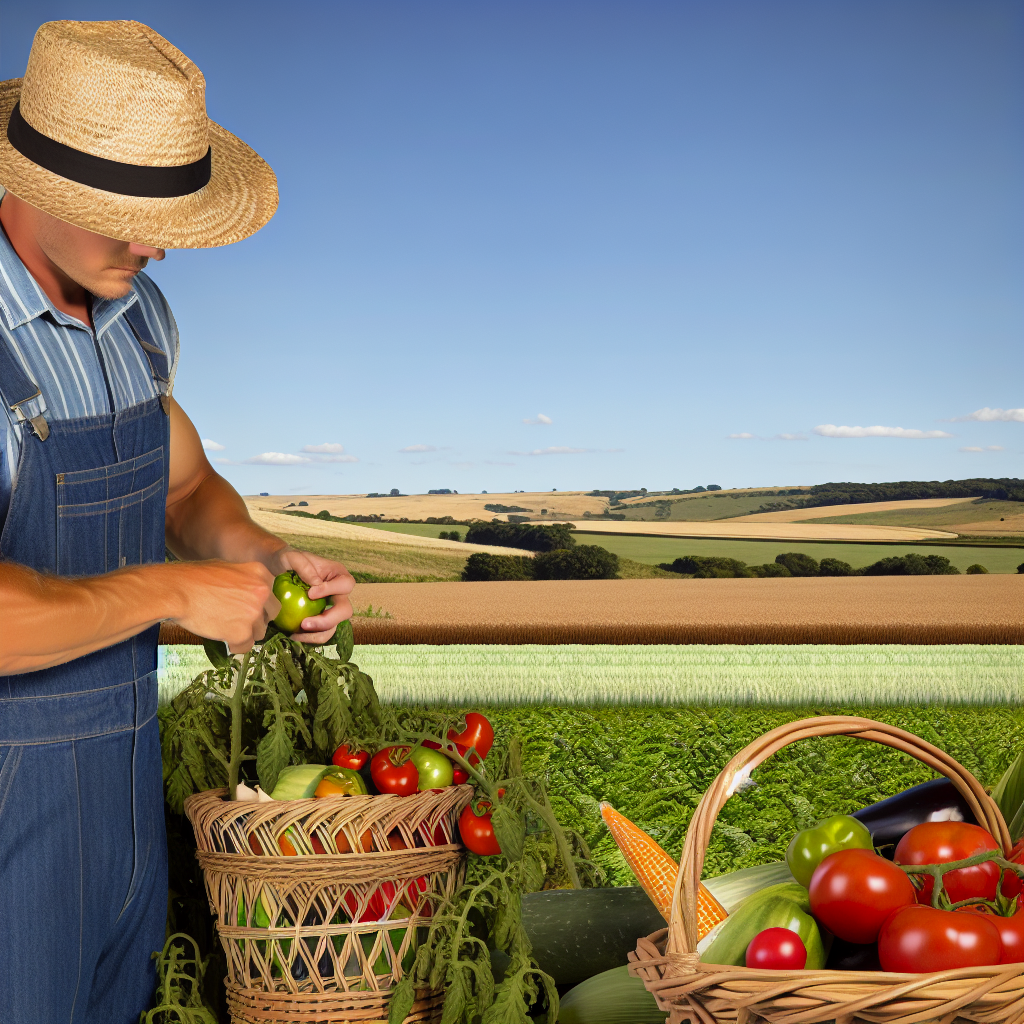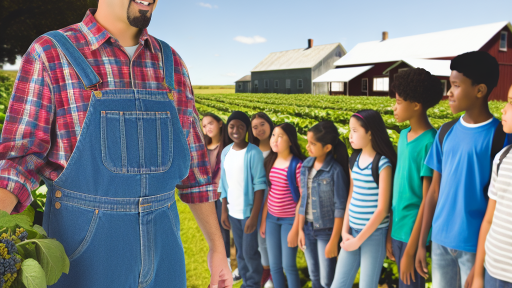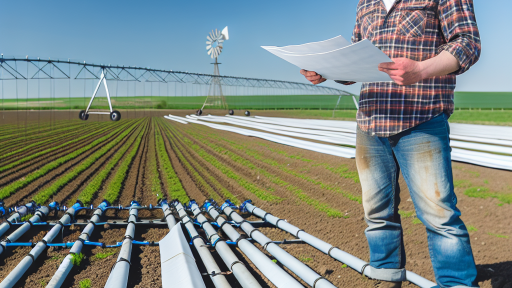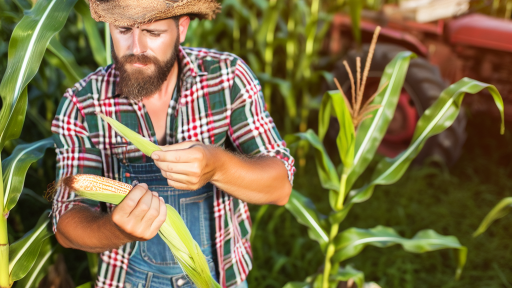Understanding the Importance of Local Food Sourcing
Supporting Local Economies
Local food sourcing significantly boosts local economies.
By purchasing from nearby farmers, communities retain valuable resources.
Furthermore, this practice encourages job creation in agriculture.
Enhancing Food Security
Local food sourcing improves food security within communities.
When residents support local farmers, they reduce dependency on imports.
Additionally, shorter supply chains minimize the risk of food shortages.
Promoting Freshness and Quality
Food sourced locally tends to be fresher and of higher quality.
This freshness results from minimizing transportation time to markets.
Moreover, local farmers often use sustainable practices enhancing quality.
Environmental Benefits
Local food sourcing provides significant environmental advantages.
It reduces carbon footprints by eliminating long-distance transportation.
Furthermore, supporting local farms encourages biodiversity in farming practices.
Building Community Connections
Buying locally fosters strong community connections.
Consumers often meet the farmers who grow their food.
This relationship creates trust and transparency in food sourcing.
Transform Your Agribusiness
Unlock your farm's potential with expert advice tailored to your needs. Get actionable steps that drive real results.
Get StartedTypes of Local Food Sourcing Tools for Farmers
Digital Platforms for Farmers
Digital platforms connect farmers with local markets easily.
These platforms provide visibility to their products.
Examples include Farmigo and LocalHarvest.
Farmers can list their produce directly for consumers.
Additionally, these platforms offer order management solutions.
Mobile Applications
Mobile applications facilitate quick communication between farmers and buyers.
Apps like AgFunder and Produce Buddy assist with logistics.
Farmers can track orders and deliveries in real-time.
Moreover, apps often include pricing comparison features.
Community Supported Agriculture
Community Supported Agriculture (CSA) programs build local connections.
Customers subscribe to receive regular deliveries of fresh produce.
This model provides farmers with upfront financial support.
Farmers benefit from having a dedicated customer base.
In addition, CSAs encourage consumer relationships with food sources.
Farmers’ Markets
Farmers’ markets offer direct selling opportunities for farmers.
These markets allow farmers to interact with consumers face-to-face.
Engaging directly enhances customer loyalty and trust.
Moreover, goods sold are often fresher than in stores.
Cooperatives and Alliances
Cooperatives enable farmers to pool resources together.
These entities help in marketing and distribution efforts.
They also allow farmers to share knowledge and expertise.
Additionally, cooperatives may provide financial assistance programs.
Networking and Events
Networking events foster connections among local producers.
These gatherings often include workshops and guest speakers.
Showcase Your Farming Business
Publish your professional farming services profile on our blog for a one-time fee of $200 and reach a dedicated audience of farmers and agribusiness owners.
Publish Your ProfileFarmers can learn new techniques and share best practices.
Involvement in local events promotes community engagement.
Furthermore, such events can lead to valuable partnerships.
Online Platforms for Connecting Farmers with Local Markets
Overview of Online Agricultural Marketplaces
Online marketplaces provide a powerful tool for farmers.
They enable direct sales to consumers and businesses.
These platforms enhance visibility for local products.
You can find many varieties suited for different needs.
Popular Platforms for Local Food Sourcing
- FarmMatch connects farmers directly to consumers.
- LocalHarvest focuses on community-supported agriculture.
- MarketMaker helps farmers find local markets and buyers.
Each platform offers unique benefits for farmers.
They simplify the process of selling local produce.
Benefits of Using Online Platforms
Online platforms increase exposure to potential customers.
Farmers can establish a direct connection with buyers.
This reduces reliance on intermediaries, maximizing profits.
Additionally, local sourcing strengthens community ties.
Strategies for Effective Usage
- Create a detailed online profile showcasing your products.
- Utilize high-quality images to attract more buyers.
- Engage with customers through timely responses.
These strategies can enhance your visibility in the marketplace.
Moreover, they inform potential buyers about your offerings.
Challenges to Consider
While online platforms offer many advantages, challenges exist.
Competition among local producers can be intense.
Farmers also need to manage their online presence actively.
Additionally, logistical challenges may arise in delivery.
Community Engagement through Online Tools
Farmers can engage with their local community online.
They can share stories about their farming methods.
This builds trust and encourages community support.
Moreover, it fosters a sense of local pride.
Delve into the Subject: Local Food Sourcing Strategies for Small Farms
Mobile Applications for Tracking Local Food Sources
Importance of Tracking Local Food Sources
Tracking local food sources enhances transparency in the food supply chain.
It helps consumers make informed choices about their food.
Moreover, farmers can optimize their production strategies.
Popular Mobile Applications
Various mobile applications are available for farmers today.
These tools streamline the process of sourcing local ingredients.
- Farmers’ Market Finder connects users to local markets.
- LocalHarvest lists farms and their fresh produce.
- HarvestMark tracks food from farm to store.
Features to Look For
When selecting a mobile application, consider essential features.
User-friendly interfaces significantly enhance the user experience.
Real-time updates help users stay current on available products.
Additionally, integrated mapping assists with route planning.
Benefits of Using Mobile Apps
Mobile apps offer numerous benefits for farmers and consumers.
First, they promote farm-to-table connections.
Additionally, they support local economies and sustainability.
Lastly, these applications foster community engagement.
Implications for Sustainable Food Systems
Mobile applications serve as vital tools for tracking local food sources.
They empower farmers and enhance consumer relations.
Thus, adopting these technologies can lead to a more sustainable food system.
Showcase Your Farming Business
Publish your professional farming services profile on our blog for a one-time fee of $200 and reach a dedicated audience of farmers and agribusiness owners.
Publish Your ProfileFind Out More: Sustainable Practices In Animal Farming
Developing Partnerships with Local Restaurants and Chefs
Identifying Potential Partners
Start by researching local restaurants and chefs who prioritize local ingredients.
Compile a list of businesses known for farm-to-table practices.
Examine their menus to see which items can feature your produce.
Attend local food events to network with food industry professionals.
Utilize social media to connect with restaurant owners and chefs.
Making Initial Contact
Once you’ve identified potential partners, reach out to them directly.
Craft a personalized email introducing yourself and your farm.
Highlight your commitment to sustainability and quality produce.
Invite them to visit your farm to sample fresh products.
Building Relationships
Engage in regular communication to strengthen partnerships.
Share updates about seasonal offerings and any new products.
Be open to suggestions from chefs for specific requirements.
Consider hosting tastings or farm tours for restaurant staff.
Creating Collaborative Menus
Work together with chefs to develop exclusive menu items.
Highlight the local sourcing aspect, appealing to consumers.
Utilize seasonal produce to keep the menu fresh and exciting.
Encourage chefs to share your farm’s story with customers.
Evaluating Partnership Success
Regularly assess the effectiveness of the partnerships established.
Gather feedback from chefs regarding your products and service.
Monitor sales of dishes featuring your produce to measure impact.
Stay flexible and adapt to any changes in demand or menu offerings.
Gain More Insights: Leveraging Online Platforms for Direct Farm Sales
Resources for Identifying Local Food Producers
Online Directories and Platforms
Many online directories help farmers find local food producers.
Websites like LocalHarvest connect farmers to consumers directly.
Another great option is EatWellGuide, which lists sustainable food sources.
Farmers can also use the USDA’s Farmers Market Directory to locate nearby markets.
Farmers’ Markets
Farmers’ markets serve as excellent venues for local food sourcing.
They allow farmers to meet and network with producers directly.
Additionally, these markets foster community connections around local food.
Attending regularly can help farmers identify the best vendors.
Local Agricultural Cooperatives
Joining a local agricultural cooperative offers numerous benefits.
Cooperatives often provide networking opportunities for farmers.
They can also assist in sourcing high-quality local products.
Moreover, cooperatives frequently share knowledge about best practices.
Farm-to-Table Programs
Farm-to-table initiatives connect producers with local restaurants and consumers.
These programs often feature local food producers in their supply chains.
Joining such programs can enhance a farmer’s visibility in the market.
Additionally, these networks help build relationships with local chefs and consumers.
Social Media and Community Groups
Social media platforms provide a powerful tool for connecting farmers.
Showcase Your Farming Business
Publish your professional farming services profile on our blog for a one-time fee of $200 and reach a dedicated audience of farmers and agribusiness owners.
Publish Your ProfileGroups focused on local food sourcing often share valuable resources.
Connecting with local food enthusiasts can open new opportunities.
Platforms like Facebook and Instagram are great for networking.
Government and Nonprofit Resources
Many government agencies offer resources related to local food sourcing.
The USDA provides grants and programs aimed at strengthening local markets.
Nonprofits also play a crucial role in supporting local food initiatives.
Finding local nonprofit organizations dedicated to sustainable agriculture is essential.
See Related Content: Implementing Organic Techniques In Modern Farming

Utilizing Social Media for Local Food Promotion
Building Your Online Presence
Start by creating profiles on popular social media platforms.
Platforms like Facebook, Instagram, and Twitter can reach diverse audiences.
Use consistent branding to enhance recognition and trust.
Regularly update your followers with relevant content.
Engaging with Your Community
Social media allows for direct interaction with customers.
Share stories about your farming practices to foster connections.
Encourage your audience to share their experiences with your products.
Create polls and ask questions to spark discussions.
Showcasing Your Products
Use high-quality images to highlight your fresh produce.
Videos can demonstrate farm processes and product preparation.
Promote seasonal items and special offers to drive sales.
Utilize hashtags to increase visibility and shareability.
Collaborating with Local Influencers
Identify local food influencers who resonate with your brand.
Collaborate on posts or campaigns to expand reach.
Influencer partnerships can introduce your products to new audiences.
Ensure collaborations align with your brand values for authenticity.
Promoting Events and Activities
Announce farm events on your social media channels.
Host workshops, tours, or pop-up markets to engage customers.
Use social media to create buzz around these events.
Encourage followers to share their experiences with event hashtags.
Government Programs and Grants Supporting Local Food Sourcing
Overview of Supportive Initiatives
Various government programs assist farmers in local food sourcing.
These initiatives aim to enhance sustainability and community engagement.
Financial support often comes in the form of grants and loans.
Additionally, there are educational resources and training programs available.
USDA Local Food Programs
The United States Department of Agriculture plays a crucial role.
It offers the Farmers Market Promotion Program to support market development.
This program provides grant funding for various market-related activities.
Eligible activities include marketing, education, and infrastructure improvements.
State-Level Resources
Many states have their own local food initiatives.
For instance, California has the California Farm to School Program.
This program connects schools with local farmers.
It promotes local produce and enhances student nutrition.
Showcase Your Farming Business
Publish your professional farming services profile on our blog for a one-time fee of $200 and reach a dedicated audience of farmers and agribusiness owners.
Publish Your ProfileGrants for Sustainable Agriculture
Farmers can apply for the Sustainable Agriculture Research and Education program.
This program funds projects that promote sustainable practices.
Moreover, it empowers farmers to adopt innovative methods.
Funding opportunities focus on research and educational outreach.
Collaboration with Local Institutions
Local governments often partner with universities and NGOs.
These collaborations create initiatives that support farmers.
For example, many regions have local food hubs.
These hubs facilitate the distribution of local produce to consumers.
Application Processes
Applying for these grants requires careful planning.
Farmers should outline their goals and project plans clearly.
It’s essential to provide a budget and timeline with applications.
Also, farmers may benefit from attending grant writing workshops.
Additional Resources
Farmers can consult the National Sustainable Agriculture Coalition.
This organization offers resources and advocacy for local food initiatives.
Furthermore, local extension services often provide guidance.
They can help navigate available programs and grant opportunities.
Creating a Local Food Network
Building Strong Relationships
Connect with local farmers and suppliers regularly.
Attend community events that focus on local agriculture.
Host farm tours to showcase your practices.
Develop partnerships with local restaurants and markets.
Share your story and principles with these establishments.
Utilizing Technology for Sourcing
Leverage local food sourcing platforms effectively.
Use online marketplaces that connect farmers with buyers.
Join mobile apps that promote local food networks.
Invest in tools that streamline communication and orders.
Stay updated on technological advancements in agriculture.
Participating in Cooperative Efforts
Explore cooperatives for collective purchasing power.
Participate in local farmer markets for direct sales.
Join community-supported agriculture (CSA) programs.
Work together to negotiate better prices for inputs.
Share resources, such as tools and labor, with other farmers.
Engaging the Community
Organize workshops to educate consumers about local foods.
Provide cooking demonstrations using local ingredients.
Encourage community participation in farm events.
Foster a sense of belonging among local food enthusiasts.
Establish a loyalty program to reward repeat customers.
Promoting Seasonal and Sustainable Practices
Highlight seasonal produce in your marketing materials.
Encourage consumers to buy locally by educating them.
Promote sustainable farming practices within your network.
Use social media to showcase seasonal recipes and specials.
Showcase Your Farming Business
Publish your professional farming services profile on our blog for a one-time fee of $200 and reach a dedicated audience of farmers and agribusiness owners.
Publish Your ProfileCollaborate with chefs who focus on local, seasonal menus.
Additional Resources
The Role of Local and Regional Food Systems in U.S. Farm Policy
The Local Food Movement: Definitions, Benefits & Resources | USU




